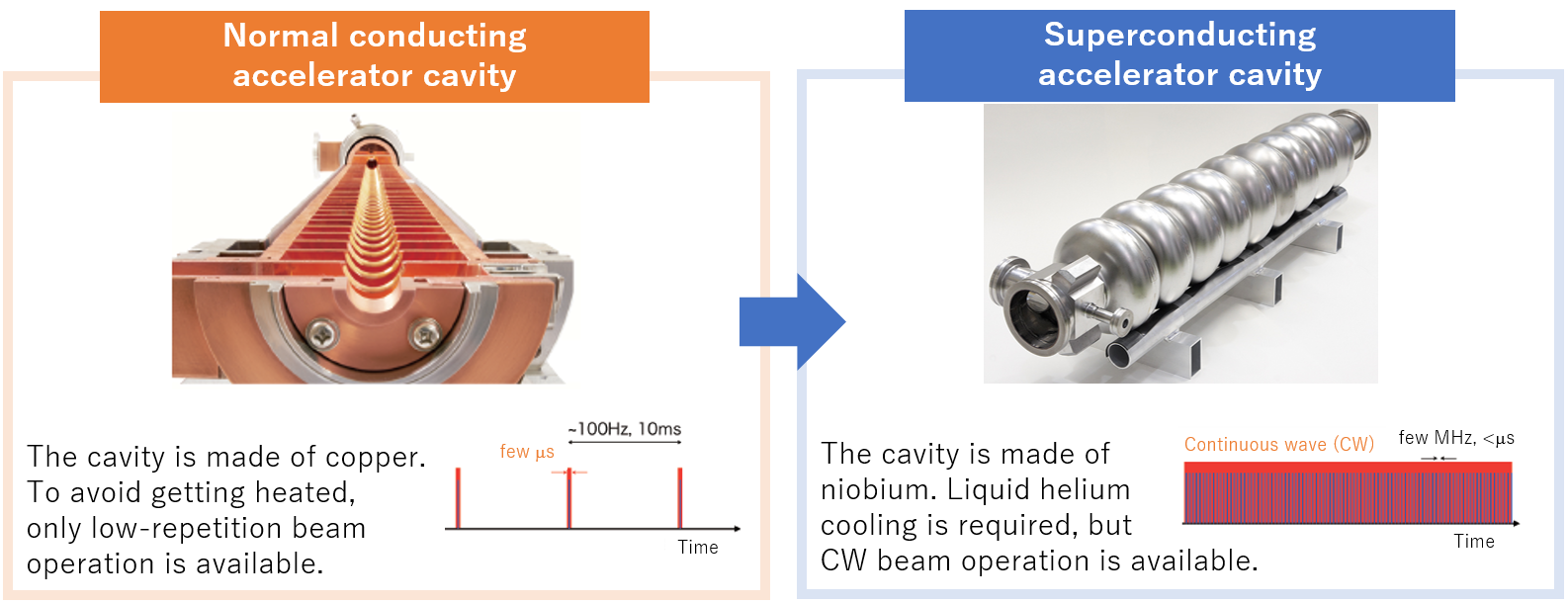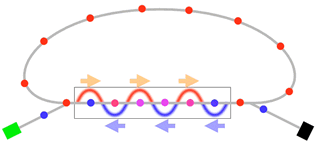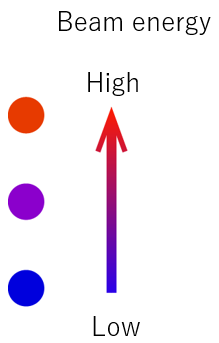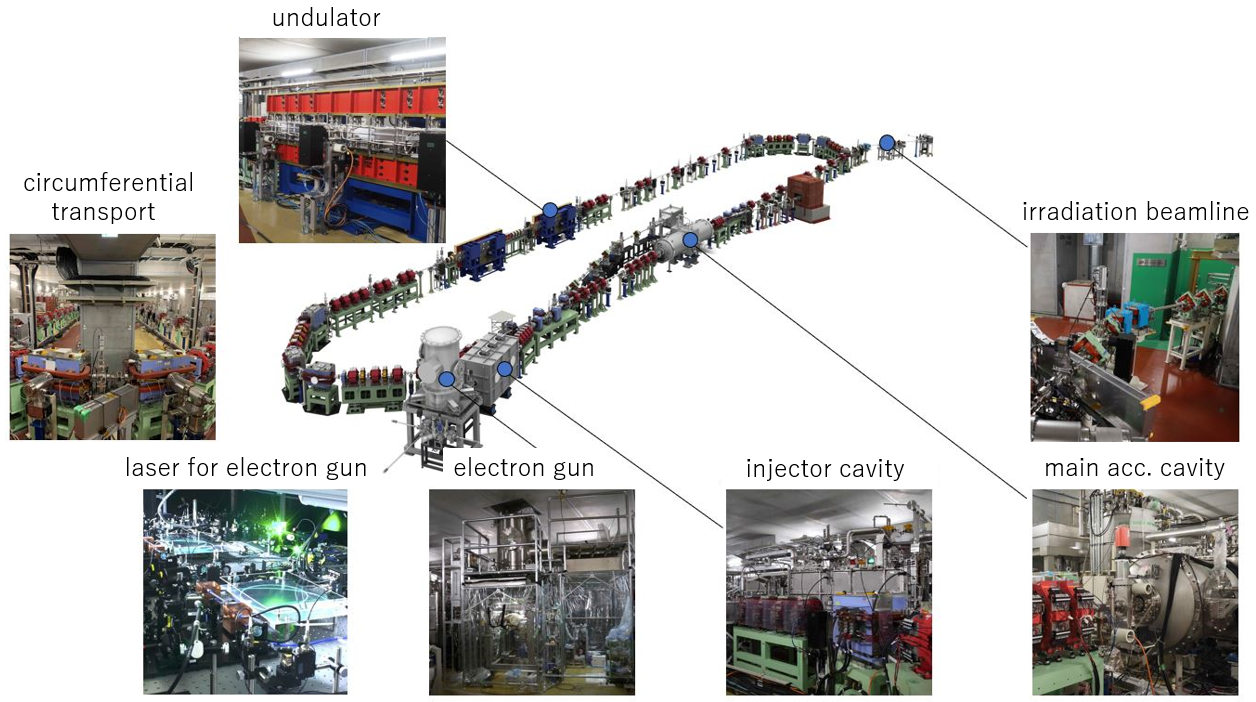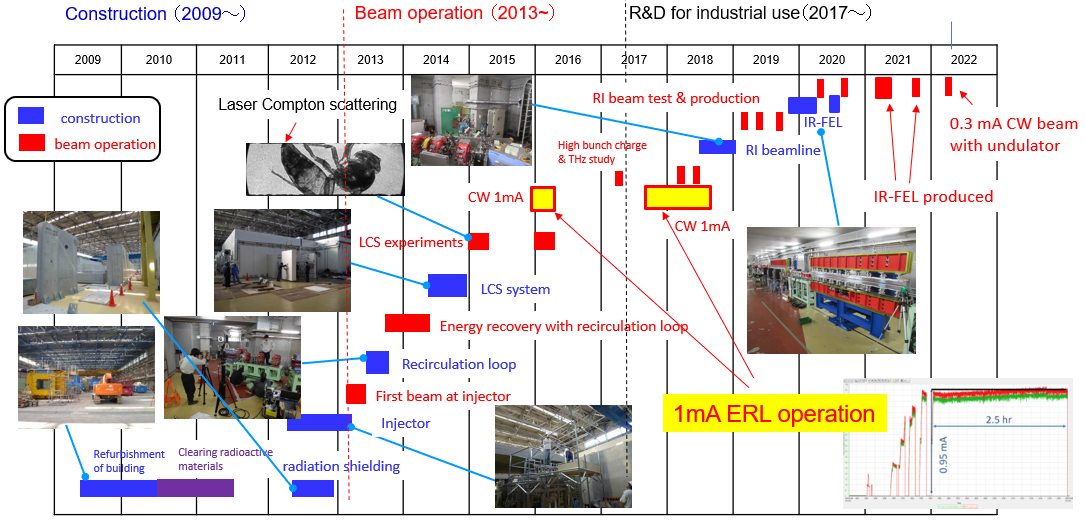What is Energy-Recovery Linac (ERL)?
A machine that accelerates a beam to a high energy in a single pass is called a linear accelerator. Normal linear accelerators are not designed for high average-current operation because the beam is disposed or injected into a storage ring after the acceleration. Therefore, conventional accelerating cavities made of normal-conducting metal (copper) cannot be useed for the high average-current opearation. On an Energy Recovery Linac (ERL), the beam that has been accelerated and used for an experiment is returned to the linear accelerator to recover its energy. The recovered energy is used to accelerate a new beam, thus enabling operation with the high-average current. In particular, the superconducting acceleration cavity significantly reduces the cavity surface loss, enabling 100% energy recovery and high-repetition rate operation with the high-average current. The recovering and reusing the energy enables a significant reduction in power consumption, making it a next-generation accelerator that is also environmentally friendly.
The combination of the ERL and a free-electron laser (FEL) makes an unprecedentedly powerful light source. FEL is a device that draws energy from electrons and converts it into light of a specific wavelength, with conversion efficiencies as high as several percent. A generation of the FEL requires electron beams with small emittance, small energy spread and short beam length. After a lasing of FEL, electrons are greatly disturbed and the energy spread and emittance of electron beams are increased. Such electron beams are difficult to transport, but in ERL, the energy of electron beams is recovered in the acceleration cavity and used to accelerate a new beam. This principle makes it possible to continue the lasing of FEL with the high-average current and high-repetition rate.
This requires a superconducting accelerating cavity that can be operated continuously and a high-current, high-brightness electron gun. At the compact ERL, in addition to demonstrating energy recovery, we are developing new acceleration cavities and electron guns. These high-quality electron beams are also used for irradiation experiments. In addition, beam tuning is important to transport the beam with less beam loss, since the beam operates at a high-average current.


